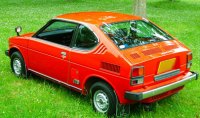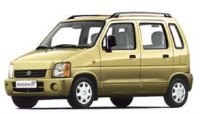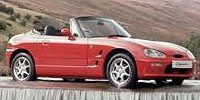
R&D centers: Yokohama
Main plants in Japan: Kosai (K-cars), Sagara (compact cars), Iwata (SUV and vans)
Main plants overseas: India (JV with Maruti), Hungary (Magyar), China (JV with ChangAn), Thailand, Indonesia.

FY2017/18: 3,338,000 units
FY2016/17: 3,074,030 units
FY2015/16: 2,951,318 units
FY2014/15: 3,042,688 units
FY2013/14: 2,856,849 units
FY2012/13: 2,878,396 units
FY2011/12: 2,802,000 units
FY2010/11: 2,878,000 units
FY2009/10: 2,545,000 units
FY2008/09: 2,494,000 units
FY2007/08: 2,637,000 units
FY2006/07: 2,412,000 units
FY2005/06: 2,200,000 units
FY2004/05: 2,010,000 units
FY2003/04: 1,830,000 units
FY2002/03: 1,843,000 units
FY2001/02: 1,642,000 units
Reference:
http://www.globalsuzuki.com/ir/library/profile/index.html
http://www.globalsuzuki.com/ir/library/annualreport/
Knowing itself is not strong enough to compete directly with local giants like Toyota, Nissan and Honda, Suzuki is clever to find space for survival. On the one hand it concentrates most energy on mini cars to keep them save from challenges, on the other hand it tried to explore into new segments that no one else had tried. This created the trend-setting Jimny, Vitara and SX4.
Suzuki formed a strategic partnership with General Motors so that it could distribute its small cars as Chevrolet in America and Opel / Vauxhall in Europe. Its investment into GM Daewoo also secures bigger cars to be sold under its own name.
 Cervo (1977)
Cervo (1977)Next year saw Suzuki built its first car, Suzulight. It was a front-wheel drive mini car powered by a 360cc air-cooled 2-stroke engine, fitting the newly established Kei-car category that the Japanese government was promoting. Suzuki made the best use of it by deriving it into several versions - sedan, wagon, hatchback and pickup.
Suzulight started a trend of Suzuki Kei-cars that was followed by Fronte (1965, a ridiculous name for a rear-engined car), Carry (1968, a real "minivan"), Cervo (1977, coupe), Alto (1979, the best selling nameplate until now), Cappuccino (1991, funky mini roadster), Wagon R (1993, which beat Toyota Corolla as the best selling car in Japan overall)... These cars consolidated its position as the No. 1 Kei-car manufacturer in Japan.
 Wagaon R (1993)
Wagaon R (1993)Above Kei-cars, Suzuki added the 1.0/1.3-liter Swift in 1983 and 1.6-liter Esteem / Baleno in 1995. However, the bigger the cars, the less successful they were.
Suzuki also tried unconventional ideas. For example, the 1970 Jimny LJ set a trend for mini Jeep. The 1988 Vitara pioneered the idea of road-friendly compact SUV well before Toyota RAV4 and Honda CR-V. The 2006 SX4 was a crossover between supermini and 4x4.
 Cappuccino (1991)
Cappuccino (1991)In order to keep its small cars competitively priced, Suzuki established production in low-cost countries like India, Hungary and China. Combining Japanese engineering and low manufacturing costs, its competitiveness in the global market is stronger than ever.